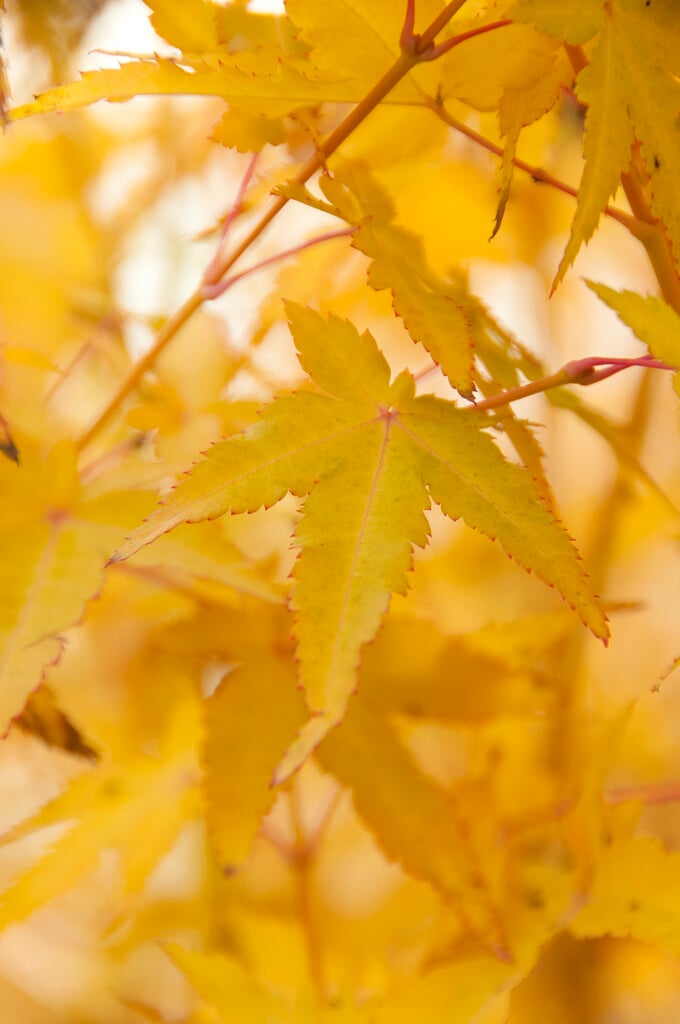Acer palmatum 'Bi Hō' (P)
Japanese maple 'Bi Hō'
A bushy shrub growing to 2m tall. The yellow-green lobed leaves emerge in spring with a salmon-pink flush and turn shades of yellow and orange in the autumn before falling to reveal the golden-yellow and orange coloured stems
Size
Ultimate height
1.5–2.5 metresTime to ultimate height
10–20 yearsUltimate spread
1.5–2.5 metresGrowing conditions
Moisture
Moist but well–drainedpH
Acid, NeutralColour & scent
| Stem | Flower | Foliage | Fruit | |
| Spring | Orange Yellow | Red | Green Pink Yellow | |
|---|---|---|---|---|
| Summer | Orange Yellow | Green Yellow | ||
| Autumn | Orange Yellow | Orange Yellow | ||
| Winter | Orange Yellow |
Position
- Full sun
- Partial shade
Aspect
South–facing or West–facing or East–facing
Exposure
Sheltered Hardiness
H6Botanical details
- Family
- Sapindaceae
- Native to GB / Ireland
- No
- Foliage
- Deciduous
- Habit
- Bushy
- Genus
Acer can be deciduous trees or large shrubs with paired, often palmately-lobed leaves and small flowers followed by characteristic winged fruits. Many have fine autumn colour, and some have ornamental stems
- Name status
Accepted
How to grow
Cultivation
Grow in a moist but well-drained soil. Water in summer if necessary. Leaf colour is best in partial shade, although full sun can be tolerated. Leaf scorch can be caused by lack of soil moisture or excessive exposure
Propagation
Suggested planting locations and garden types
- Cottage and informal garden
- Patio and container plants
- Architectural
- City and courtyard gardens
- Rock garden
- Low Maintenance
Pruning
Pests
May be susceptible to Acer gall mite, aphids, caterpillars and horse chestnut scale
Diseases
May be susceptible to Verticillium wilt, Acer leaf scorch and honey fungus
Get involved
The Royal Horticultural Society is the UK’s leading gardening charity. We aim to enrich everyone’s life through plants, and make the UK a greener and more beautiful place.
